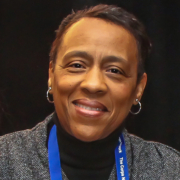

Editor’s Note: Each summer many of our Corps send crews into the backcountry and wilderness. From time to time we publish accounts of these experiences. The one we are publishing today is among the best. Based in Seattle, Washington, EarthCorps is unique among The Corps Network’s membership in that many of its Corpsmembers are recruited from overseas. This account was written by a crewleader named Zach.
I’ve always felt that working and living in the wilderness provides a great equalization between people. It helps to bring forward all the essential qualities between humans and strips them of their differences. In the backcountry, you are all on the same footing. When you live in a tent, it doesn’t matter how much your property is worth. When you are swinging the same tools, your credentials do not stratify you. When you are speaking a common language of slope, grade, and soil, your mother tongue does not define you.
As a Crew Leader at EarthCorps, I serve with a group of young professionals from across the globe to restore local habitats. A challenge faced by operating crews from such different backgrounds is building a common community in which all the participants can fully realize their potential. Often, our work takes place in the greater Seattle area. We maintain and create sustainable habitats by removing Blackberry and other invasive species of plants from parks and green-spaces. We spend most of our time restoring public land so that people may reconnect with the urban wilderness that exists in the city.
Cities are a nucleus for human creation. Often these artifices are specific for the group of people that have created them. Surrounded by the creations of Pacific North West culture, it is easy to discuss only the differences between the crew members. Recently I had a conversation with my Crew Member João from Brazil about the HOV lanes we use in Seattle. He was amazed by the speed in which we were able to bypass WA-520 traffic on a Tuesday morning. Our trip to a Kirkland park became a lively discussion about the Eisenhower Interstate system and the comparative construction of Brazilian, Ugandan, and Nepalese transit systems as others chimed into the conversation. In trying to build a community of this diverse group, it is essential to find the commonalities between us instead of just the differences. Surrounded by cultural artifacts, a diverse group often just sees the contrasts.
In July my crew was able to participate in some trail maintenance and building along the Foss River in the Necklace Valley Wilderness. We spent eight days living many miles from other people. We were visited only by the occasional hiker heading up to Jade Lake and a few of the more curious critters looking for berries. For a few members of my crew, it was the first time for them to get into the backcountry. They were academics from top universities across the globe–more comfortable finding a book on hydrology than swimming in a river. For me, I was excited to leave the roar of the Sound and return to a place where things were simpler.
Stripped of the city, we were alone in our surroundings. Suddenly, the crew members from the United States no longer had the cultural home-field advantage. Haddy from Uganda and Prati from Nepal could live as comfortably as Natalya from Indiana or Max from Washington under the forest canopy. No longer surrounded by culture, we were revealed as humans. Our conversations changed as we spent more time in the forest. Before we would talk about American holidays and how they were different from Nepalese festivals. Now we discussed the underlying concepts of belonging to a place and how family and community helped center our identities. As a crew, our festivals did not rely on tradition but around sharing calories after a long day of work. The universal and basic feelings of hunger, fatigue, and camaraderie were now central. We had taken off our cultural overcoats to find the human underneath. Every night we would uncover different joys that each of us had buried inside of them and we would share them with laughter and compassion around a campfire.
All too soon the days drifted by and we hauled our gear out on a beautiful sunny day. Our packs seemed light after eating much of the food and hauling rocks for the past week. But as we got closer to the city we started carrying more: phone calls we had to make, bills to be paid, friends to visit and chores to be done. We wrapped ourselves in our national flags again and started settling into our place among other people and the routine of the city.
Yet now it seemed different. We had seen each other as hungry, loving, tired, happy, capable humans. Instead of identifying each other based on our pasts and traditions, we could see each other more clearly as people. All of us possessed the same fundamental qualities, fears, and desires. We just spoke about it with different words. The distance between Nepal and Seattle seemed smaller now. We had crossed a bridge in our community and now had a better understanding of each other within our small group. We had done restoration work on each other as we worked on that trail.
The backcountry brings people together in a very unique way. It closes the gap between cultures and brings to the forefront all the human things that are so often muffled by the noise of our creation. I have always enjoyed its ability to fundamentally change perspectives. My crew was a powerful example of this. We hiked in a small community centered on exploring cultural differences. We came out a global community of six young humans.


































































